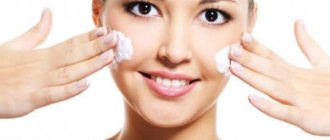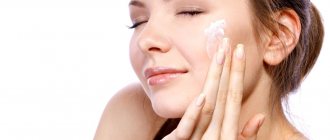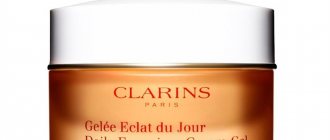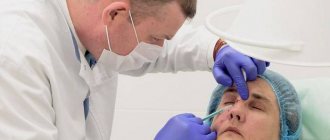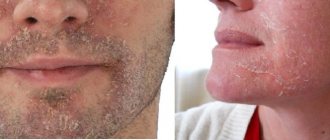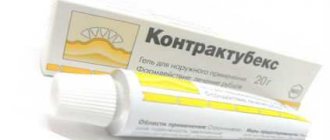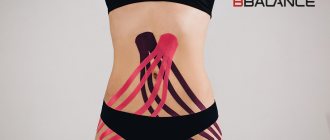Removing warts is a topic that interests those infected with the papilloma virus. After all, warts are skin changes that are caused by them. It is very easy to become infected with this virus, for example, by shaking hands with a sick person, sharing the same towel with a sick person, or in a swimming pool where we walk on the floor without shoes. However, it is much more difficult to decide to remove warts. Additionally, people who have warts can spread the warts throughout their body very easily. For example, from one finger to another or while shaving.
If you suddenly discover that you have some kind of formation similar to a wart, then it is better to immediately consult a specialist, and not make a diagnosis yourself or with the help of dubious home-grown doctors. But by typing in a search engine: wart removal Kharkov , you will immediately be taken to the medical website, which is located in Kharkov. They carry out painless removal of warts of various types. The procedure is performed by experienced specialists – professionals in their field.
It takes very little time and, as we said above, is painless. The only thing is that you must first make an appointment for a consultation so that the doctor can diagnose the type of wart and prescribe a method for its removal.
Laser removal of warts
Laser removal is the most popular way to get rid of skin tumors. Its advantage is speed, absence of scars, minimal risk of infection and other complications. The method is suitable for removing small warts, although it is also used for large tumors. For example, it is difficult to do without a laser when you need to remove a wart on the face or other open area of the body. Healthy tissues are not affected during laser destruction of warts. There are no incisions made on the skin, the method is completely non-contact.
The laser beam gently cauterizes the blood vessels surrounding the wart. Bacteria are killed during the procedure. Recovery takes no more than a week. Swelling, bleeding, infection and other complications are excluded. If necessary, the warts remaining after tissue removal can be sent for histology, since they are not completely destroyed.
The procedure is simple and anesthesia may be used. The patient is placed on a couch and the laser device is aimed at the wart. After this, a beam is fired, which evaporates part of the tumor tissue in a split second. After a few seconds of such exposure, the procedure ends, but if the wart is very large, it has to be removed in several stages. This is the main drawback - if a course of procedures is necessary, the patient spends a lot of personal time and pays for several sessions.
Types of warts
Warts are papular lesions of the skin. They are caused by the HPV virus, or human papillomavirus. These benign skin growths vary in size and appearance. They are located in different places on the body. Most often they appear on the skin of the legs, arms and intimate areas.
There are several types of warts:
- Common warts range in size from 3 to 10 mm and are flesh-colored. They are usually located on the toes, elbows, knees, face and scalp.
- Plantar-palmar warts range in size from 1 to 2 cm. They are usually located on the soles. They are located deep or superficial, similar to a callus.
- Mosaic warts are a type of plantar wart. Located on the soles, most often on the forefoot. These are very small and numerous warts, forming mosaic clusters.
- Flat warts are the so-called juvenile warts, several millimeters in size and with a smooth surface. Located on the face and back of the hands
- Filiform warts - usually located on the eyelids, neck, lips and face. They are quite soft, growing on a thin stalk.
- Venereal warts, also known as genital warts (so-called condylomas), are transmitted sexually. Can take cauliflower form
Removal of warts is highly recommended as they grow and spread over time, increasing the risk of developing cancer.
Removal of warts using the radio wave method
This is the most gentle technique and is also best suited for small warts. High-frequency waves make it possible to remove pathological tissues by literally evaporating them, which makes this method similar to laser destruction. The mark left on the skin is practically invisible, so the use of radio waves is possible even on the face.
The advantages of this method also include:
- Painless;
- Fast recovery;
- Minimum complications and side effects;
- Elimination of bacteria during the procedure;
- No need for complex care;
- Possibility of histological analysis.
The downside is that radio wave surgery is not suitable for particularly large warts.
Which warts need to be removed?
Flat and raised warts themselves are not dangerous.
Their distribution and localization often provoke the development of related problems. Some warts belong to the group of dangerous ones; their elimination is based on the testimony of doctors:
- Warts that are located in places of constant friction and predisposition to injury (on the head, in the armpits, on the feet).
- Formations that cause physical discomfort. These include growths on the soles, palms or fingers.
- Condylomas in the anogenital zone.
- Growths called papillomatosis.
Some growths are completely harmless; the advisability of their excision depends on your own preferences.
Removing warts with liquid nitrogen
Cryodestruction is a contact method for removing warts. Its advantages are its low price, speed of procedure, and good results. The method is suitable for removal in any area of the body, but is rarely used when working with the face - small marks are possible. On the negative side: sometimes there is pain during and after the procedure.
The removal process with liquid nitrogen is simple. The patient is placed or seated on a couch in the operating room, and the site of exposure is treated with an antiseptic. The doctor dips a cotton swab or special instrument into liquid nitrogen. Its temperature is below −195.75°C. After this, the doctor brings the stick to the wart and touches it. Tissues quickly freeze and collapse - cells rupture due to the expansion of frozen water. Remaining tissue is removed and the wound is treated.
Prevention of warts
To prevent the occurrence of warts, direct contact with the affected areas should be avoided. Additionally, in areas such as gym locker rooms or swimming pools, you should protect your feet by wearing flip-flops or other safety footwear.
If the genitals are infected with the papilloma virus, sexual contact should be avoided until recovery. And also monitor your condition by performing a Pap smear, since some types of the virus are oncogenic, that is, they can contribute to the development of a tumor.
Appropriate prevention effectively protects against infection with the papilloma virus, including through sexually transmitted infections.
Electrocoagulation of warts
This method is also suitable for most areas of the body, including the face. Before the operation, it is necessary to use local anesthesia and treat the skin with an antiseptic. Removal is carried out using an electrocoagulator - a special device that heats tissue with high-frequency electric current. The loop of the device touches the tumor and gently cuts it off, while simultaneously cauterizing the surrounding blood vessels and destroying bacteria. Loop temperature 800°C. After exposure, a thin crust forms, which falls off within a few days, leaving behind a small pink spot.
The advantages of the procedure are the small amount of time required, the ability to remove several warts in one session (if they are located close to each other), and large warts can be removed. During and after the operation, bleeding and infection are excluded. When removing small warts, no traces are left.
The downside is that it cannot be used for plantar warts. They are very rough and localized in a too dense layer of skin. In such situations, more intense types of influence are used.
How to treat a wound after wart removal
In order for healing to be successful and scars not to form on the body, it is necessary to follow certain processing rules.
It is necessary to take into account the relevance of changing dressing materials. The procedure is carried out under completely sterile conditions.
You should use only medications and solutions prescribed by your doctor for treating and caring for the wound.
In the first few days after the operation, you should not wet the wound. While bathing, you can cover the problem area with a band-aid. When changing dressings, use antiseptic solutions - alcohol, iodine, potassium permanganate, furacillin. Contact with water is allowed as soon as the affected area begins to heal. Eliminates friction with a towel. It is better to dry the wound with soft wipes.
Creams with a healing effect - Solcoseryl, Eplan, Bepanten - will help speed up the regeneration process. Bacterial infection can be prevented by using ointments with antibiotics - Baneocin, Levomikol, Nitacid. To prevent scarring, Contractubex and Acerbin are used.
During the healing period, it is forbidden to peel off the resulting crust, use aggressive cosmetics, or expose the wound to sunlight. It is better to avoid visiting ponds, saunas, baths, and solariums.
How to cauterize a wart yourself
The pharmacy chain offers a wide selection of products for removing growths. Most often they are not drugs. Almost all of them have a similar effect: with the help of aggressive alkalis, the tissues of the formation are cauterized, after which the wart gradually dies.
Pharmacy products for cauterizing warts
- Lapis pencil is made on the basis of silver nitrate, due to which it has antibacterial agents. Convenient to use: allows you to precisely cauterize the desired areas. The disadvantages include staining the skin at the site of application in a dark brown color, so it is better not to use the pencil on those areas of the body where it will look unaesthetic (on the face, etc.).
- Ointments with antiviral effects . The substances contained in the ointment gradually inhibit the human papillomavirus, which causes the wart to dry out and subsequently fall off. Such ointments include Panavir, Viferon, Aldara cream, Oxolinic ointment. Their additional advantage is their immunostimulating effect. The disadvantage is that the ointment acts rather slowly; you have to wait from two to four weeks until the warts completely disappear.
- Iodine - the method of application is similar to silver nitrate; it must be applied twice a day. Disadvantage: can severely burn healthy skin if applied carelessly. To avoid this, the skin around the wart must first be lubricated with a rich cream, iodine must be applied pointwise and carefully with a cotton swab or swab.
- Super celandine is an alkali-containing product that actually has nothing in common with the plant of the same name. Apply the product once, and after a few days, if necessary, repeat again. The product has a very strong aggressive effect, so it requires caution in use: if it comes into contact with healthy areas of the skin, the alkali can cause burns.
- Salicylic acid , unlike the above remedies, not only cauterizes, but also softens the keratinized areas of the skin, ultimately destroying the growth. When using salicylic acid, the skin around the growth must be protected: covered with a band-aid, and then covered with a piece of band-aid crosswise and the wart itself. Salicylic acid is a fairly strong remedy; its gentle analogue is salicylic ointment.
- A patch containing salicylic acid, or Salipod, is used more often to get rid of dry calluses on the feet and corns, but it also helps against warts. Before using the patch, the wart must be steamed and then glued on top. It softens the keratinized scales, after which they can be easily removed with pumice.
- Feresol is a phenol-based solution for cauterizing skin lesions. For small warts, a single cauterization is sufficient, for medium ones - three or four, and large and plantar warts may require up to ten such procedures. After cauterization, the growth becomes covered with a crust, which dries and subsequently falls off in about a week.
- Verucacid is a drug that has a local necrotizing effect similar to the action of Feresol. It can also be applied several times if necessary, but you need to wait until the dry crust falls off before reapplying.
- Cryopharma - this substance is called a home analogue of liquid nitrogen. Its temperature is not so low, but it is quite sufficient to freeze the growth. The drug is in a can equipped with a special applicator for application. Under the influence of the drug, the growth first turns into a bubble, and then in its place a dry crust forms, which subsequently falls off.
Folk recipes
Folk remedies for treating warts include the following plants and substances available to everyone:
- Celandine is a plant with poisonous juice that has a cauterizing effect. Apply celandine juice only to the growth itself, avoiding contact with healthy skin. You should be careful not to repeat the procedure more than once every couple of days.
- Vinegar - even one drop of the substance is enough to cause the wart to die off. Since acetic acid is very strong, the skin around the growth must be protected with a plaster (sealed by cutting a suitable hole in it). There is another original way: mix acetic acid with flour, place the resulting cake on the wart overnight, covering it with a bandage. One such procedure will be quite enough.
- Garlic - the essential oils of this plant have a strong antibacterial and antiviral effect. The simplest recipe is to apply garlic slices to the growth, securing it with a band-aid. More complex recipes involve creating ointments and tinctures based on garlic, which are also applied pointwise to the growths. The only disadvantage of garlic is its strong smell, so treatments with it should be carried out before bed, leaving the product on the warts overnight.
Is it possible to get rid of it forever?
There is not a single remedy that will destroy papillomavirus in human blood. You can suppress its activity and keep it in a dormant state for as long as possible. After removal of a specific papilloma, a recurrence of the disease in the same place and the appearance of new growths nearby are possible.
Conditions for HPV activation:
- decreased immunity due to illness, injury, exhaustion, stress;
- changes in hormone levels during puberty, pregnancy, menopause;
- injuries, skin damage;
- failure to comply with hygiene rules;
- wearing uncomfortable clothes and shoes for a long time.
Preventive measures:
- increase the overall resistance of the body;
- monitor the condition of the skin, quickly heal damage, irritation, wounds;
- observe the rules of personal hygiene;
- do not use other people’s personal belongings, clothes, shoes;
- do not touch warts on the body;
- do not damage benign growths.
How to quickly get rid of warts
Need advice from an experienced doctor?
Get a doctor's consultation online. Ask your question right now.
Ask a free question
Modern medicine offers a variety of methods for removing warts: medications, surgery, and hardware interventions. If the affected area is small, the growth can be removed quickly. Individual treatment should be prescribed by a dermatologist, based on the type, location, and condition of the body. The doctor conducts a test to determine whether the growth is malignant.
It is forbidden to self-medicate warts. Such intervention may have negative consequences due to the spread of the virus to healthy surfaces.
Local treatment with pharmaceutical drugs
After consulting with your doctor, you can purchase topical medications for warts at the pharmacy. They are suitable for combating small, recently formed growths. According to the mechanism of treatment, drugs are divided into types:
- Softening. The most effective Vortex cream, which kills HPV in the skin at the site of application. Has no analogues, different product names. The remaining medications have only an antimicrobial, softening effect: “3% Oxolinic ointment”, “Salicylic acid”, “Viferon”, “Doufilm”, “Panavir”, “Solcoderm”, “Collomac”, “Ridoxol”, ointments with retinoic acid. The following patches seem to work: “Salipod”, “SudaEpitact”, “UltraHDR.Hause”.
- Cauterizing (for coarser formations on the feet or palms): “Verrucatsid”, “Feresol”, “Superclean”, hydrogen peroxide, aqueous solution of iodine, castor oil. A painful method, the consequence of which is a chemical burn of the skin and a scar after it. More gentle products: liquids “Duofilm”, “Solcoderm”, pencils “Lyapisny”, “Wartner”, “Lekker-Superclean”.
- Freezing. "Cryopharma", "WartnerCrio", "MaxiVart".
Antiviral treatment
With local treatment, it is recommended to undergo a course of antiviral and immunomodulatory therapy. List of medications: “Isoprinosine”, “Viferon”, “Kipferon”, “Genferon”, “Groprinosine”, “Tsitovir-3”.
The result of the action on the body is the destruction of the HPV structure; synthesis of natural interferons, strengthening resistance, strengthening the body, slowing down the growth of existing ones, preventing the emergence of new growths. The infection will remain in a suppressed state longer.
Removing warts using chemicals
Some chemical compounds can effectively fight skin warts. These include salicylic acid and alkali solutions. When they get on the tumor, they dissolve its cells. This happens gradually, layer by layer. Therefore, this method takes time, sometimes up to several months.
The disadvantages of this method include the fact that the chemicals act “indiscriminately”: they dissolve everything that gets in their way. There is a risk of damage to healthy skin. Therefore, she must be protected during sessions.
How to prevent scarring after removal
After removal, a scar may remain. To avoid this, you must follow your doctor's instructions during the recovery period. The wound should be treated with the recommended antiseptic and the dressings should be changed. Additional treatment with Contratubex containing heparin will speed up regenerative processes.
Leaving the wound untreated, scratching it, introducing an infection, a person will provoke suppuration. In this case, the scars will remain after removing the growth, and over time it will be impossible to remove them.
Do warts need to be treated?
According to experts, not all warts require removal unless they cause discomfort related to their appearance. Harmless tumors do not need to be treated. However, first you need to make sure what type of wart we are talking about.
Mandatory treatment is required for formations that can quickly progress and degenerate into malignant tumors.
Sometimes they can appear or disappear. This is due to the deterioration of the immune system. For visual identification, you can look at photos of large warts on the Internet.
What a wart looks like - 150 photos of varieties, structure and description of the properties characteristic of the growthRemoving warts at home - removing warts with your own hands. Step-by-step instructions and reviews about the most effective methods (130 photos + video)
Ointment for warts - tips for choosing an effective and inexpensive ointment. 120 photos of the best drugs and tips for their use
What causes warts
Warts are caused by a virus that can easily be acquired through shared objects, public places, or walking barefoot. Such places include a swimming pool and a public bath. According to various sources, up to half or more percent of the population are carriers of these viruses. Warts appear especially easily when there is damage to the skin. With increased sweating of the skin of the hands and feet, the likelihood of acquiring an infection in a public place becomes greater.
With a normal handshake, there is also a chance of acquiring a virus. You should not take other people's personal hygiene items and personal belongings. In addition, the virus is transmitted sexually and through unsterile instruments, for example, in a beauty salon.
The virus that causes the formation of warts can remain in the human body for a long time, up to six months, without causing growths. It is in an incubation state and is waiting for suitable conditions. When the immune system is weakened, the virus becomes more active and warts appear.
Possible consequences of a severed wart
If you accidentally pick off a wart or cut it off with a sharp object, serious complications can develop. The most dangerous consequence is the addition of a secondary infection. Pathogenic microorganisms penetrate an open wound and multiply quickly. Failure to see a doctor in a timely manner can result in serious disruptions in the functioning of the body and death.
In the best case scenario, if you pick off a wart, a new one will grow in its place. This is a virus that sits deep in the layers of the skin and has a root. Simply ripping off the growth is not enough; penetration inside and elimination of the pathogen is required. This can only be done in a medical facility.
Warts cause unpleasant associations in people, and many carriers face the problem of removing them. Carriers of the virus may be unaware of the disease and mistake small balls on the body for a cosmetic defect that can be torn off, cut off, or masked. Unfortunately, such actions lead to the development of complications and more active attacks of the HPV pathogen. Due to incorrect actions, you can, at best, get a scar, or at worst, become the owner of numerous warts. Do not perform removal procedures yourself. Entrust the work to a specialist.
The article has been reviewed by the site editors
